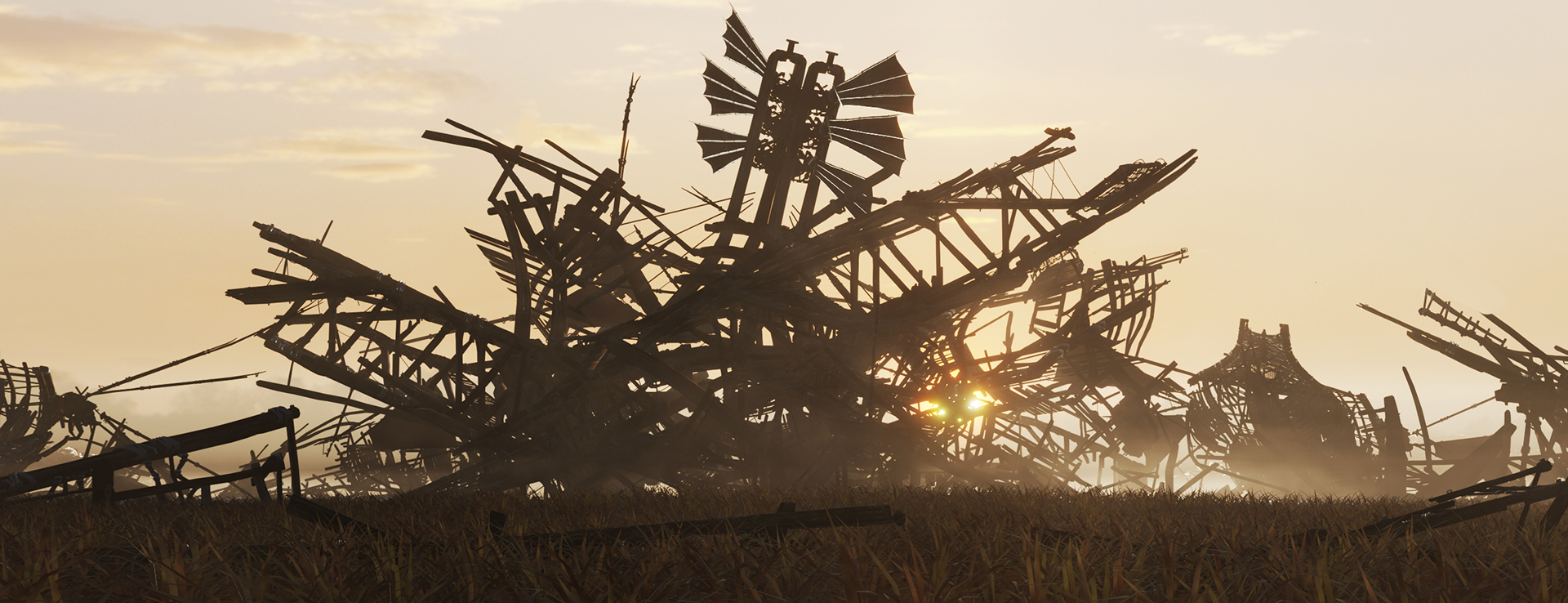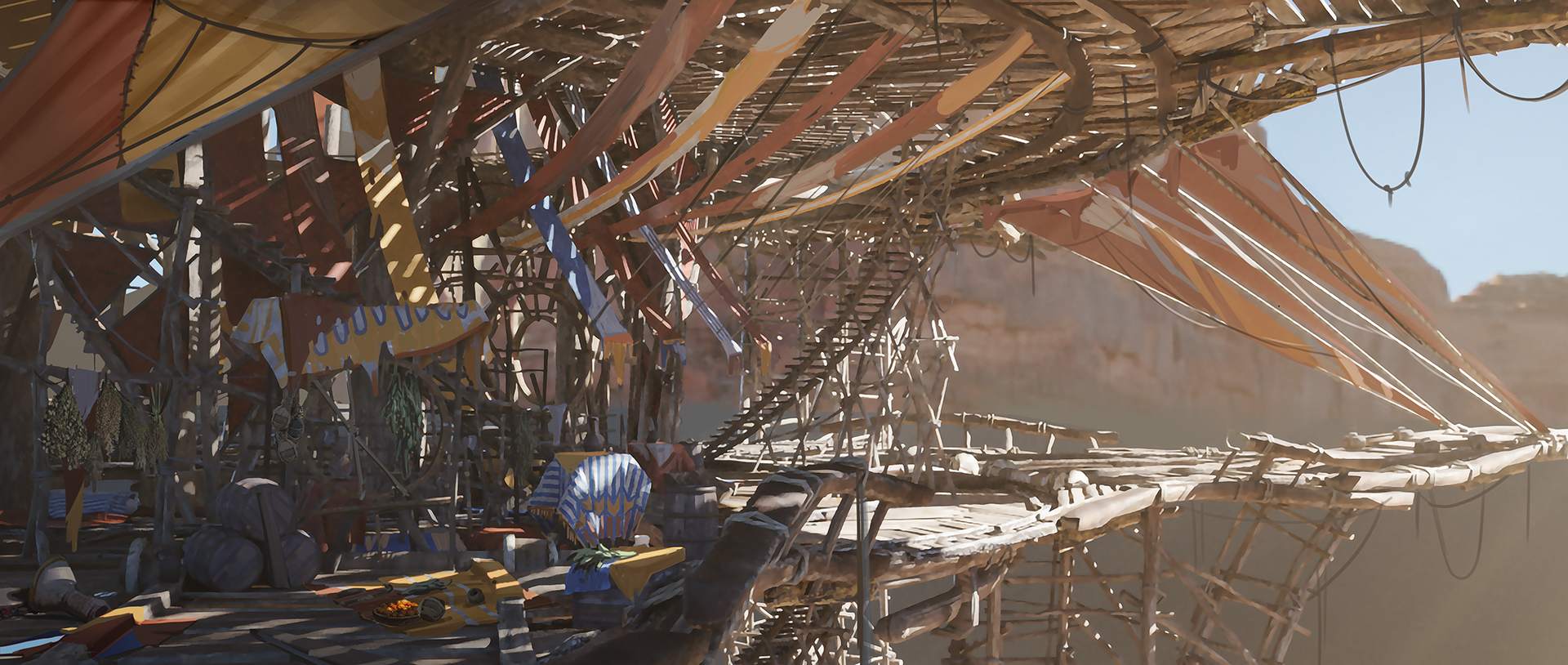[previewyoutube][/previewyoutube]
Although life would not survive without the oases, no Nomad should feel safe inside them. Rupus and other nomads can be as deadly as lack of water. Players who log out inside oases without any protection bet high on good intentions of others, as their characters, bases and Walkers can still be interacted with.
For a weary traveler who seeks to rest just for a moment, sometimes the wasteland is the best option. Staying inside a strong base can be as safe as hiding in the desert, but building such a structure is no easy task. Many beginning players will choose the wasteland instead. To travel there, they need to reach the edge of the and activate the
Leave Oasis option. At this point, they can either travel to another Oasis or safely leave the game.
Traveling safely with possessions
The wasteland is no place a nomad can actually live in. There’s virtually no water, no food, and nothing to build better equipment with. Nomads need to visit oases in search of needed resources. And when they go inside a danger zone, they need to be prepared. So they craft and scavenge useful items, acquiring many valuable possessions over time. Their load increases and they quickly learn an important lesson. It is difficult to travel swiftly with anything more than a stick they found and a rugged shirt on their back.
To solve this problem, nomads invented walkers - a perfect way to cover a lot of distance while keeping the most needed belongings at hand.
The Firefly Walker is the first vehicle new nomads can build. It’s versatile but it doesn’t excel in any particular task. It is propelled by pedals but crafty nomads will also be able to upgrade it with wings for increased speed. The walker can carry a few small structures on its deck, like a campfire or a crafting station. It is too small, however, to handle a bigger load like heavy chests or resource harvesting machines. Every nomad, whatever their occupation, eventually will need more space to keep their goods safe.
 Ruins of destroyed Walkers
Ruins of destroyed WalkersBases
Bases allow nomads to protect themselves, their walkers and many possessions from the greed of pirates. It takes a lot of experience to construct a sturdy structure, and no nomad is born with woodworking abilities. Therefore, before players raise their first wall, they must learn base-building skills in the player Tech Tree.
The bases are built piece by piece and can take any form and size - from a simple cubical house to a guarded fortress. Experienced builders can choose what materials they’ll use, so they can create structures that will be light and easy to transport or heavier but able to withstand more punishment. Finding a sweet spot is not easy. No nomad wants to leave such an expensive structure behind, but the more impressive the camp and the more riches it protects, the more likely it is that someone will try to plunder it.
Destroying bases and escaping dangerous areas
Bases, like all structures, are not indestructible. If hostile nomads decide that there’s enough value hiding inside a structure, they’ll seek to destroy it. Using their siege weapons, they’ll launch devastating hull breakers at the most vulnerable parts of defenses. Most often they’ll know where to hit, having investigated the target before the battle, as they’ll want to make each shot count. On the other hand, hull breakers, although very pleasing to fire, are no easy thing to craft.
With or without their own base, every nomad can become a victim of a pirates’ attack, Rupu’s aggression, or nature’s wrath. There’s no escaping the danger - one can only choose how much of it is enough. If a nomad decides that a given oasis is too perilous, they can travel to another one.
When the players approach an edge of an oasis, they access a global map overview, with neighboring oases displayed there. They can inspect each available area to learn its terrain type, level of danger, and its claim status. Most oases rich in resources will be claimed by a clan, and clans can add an additional layer of safety.
Clans protecting the settlers
Clans collect a profit for every settler in their territory. Whenever someone harvests a resource inside a claimed oasis, the dominant clan gets an additional bonus to their resource yield. Because the bonus is not cut out of the settler’s yield, it is a win-win situation. Similarly, the tax nomads always pay for using a Trading Station goes to a clan that holds an oasis. So to make sure everyone benefits, clans most often provide some kind of protection to other nomads.
It’s up to a clan what strategy they’ll use to enforce the order. They might send out patrols to deal with unwanted aggression, set up guards at the Trading Station, or provide convoys for traders. Whatever they decide to do, pirates that do not have a good plan and considerable firepower will not survive long.
 Trading station concept art
Trading station concept artBase packing
Yet even the most powerful clan cannot protect anyone from the scorching sun. When the time comes, everyone must evacuate before the increasing heat boils them alive. The bases will be dismantled, packed and stored on walkers.
Every base must be carried by a single walker, so transferring a sturdy war camp to safety will require a walker with ample cargo space. This is one of the rare times when those who possess little are at an advantage. They don’t need expensive vehicles. They will quickly gather their belongings, transport them to a safer place, and wait for the big walkers to come in screeching and carrying whole clans armed in top-tier siege weapons.
[h2]UPDATE 2020.01.17[/h2]We released a follow-up video to better explain some aspects of the Safe Logout mechanics:
[previewyoutube][/previewyoutube]






 Ruins of destroyed Walkers
Ruins of destroyed Walkers Trading station concept art
Trading station concept art concept art of the sandworm
concept art of the sandworm early sketches of the sandworm
early sketches of the sandworm